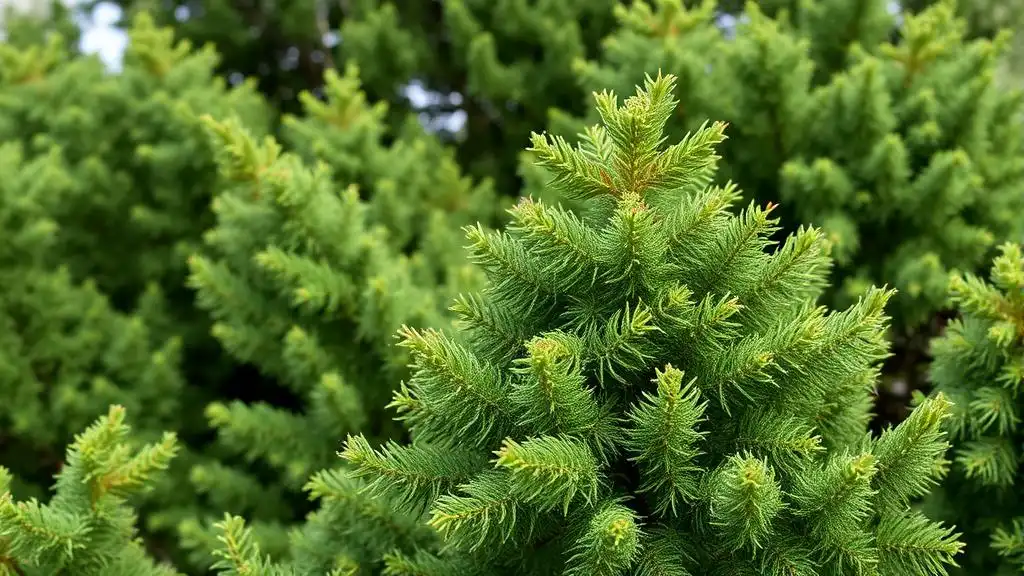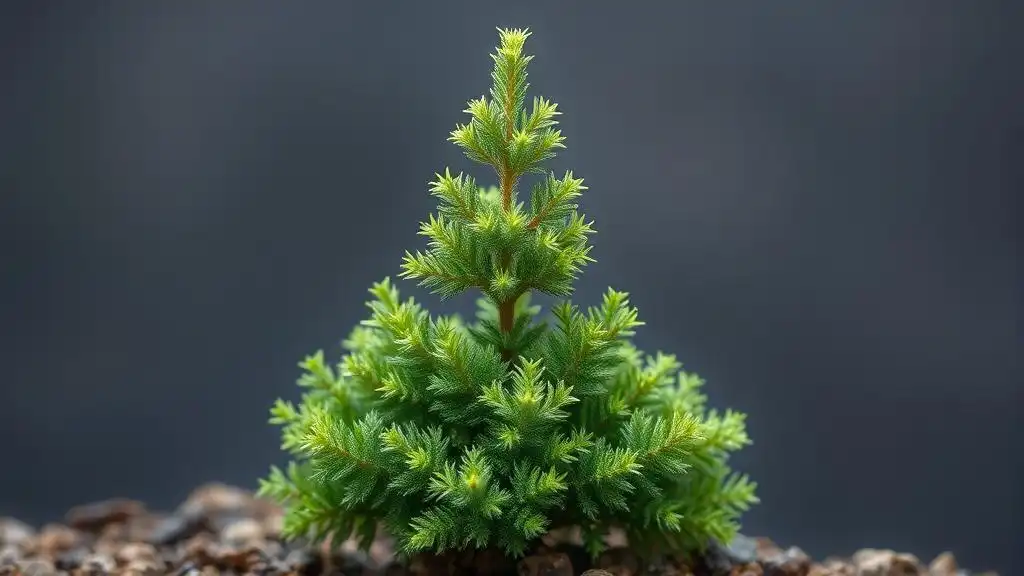
Explore the world of Thuja trees with our comprehensive guide covering popular types like Green Giant, Emerald Green, and more. Learn about their sizes, care requirements, and how to maintain these versatile evergreens for a vibrant and resilient garden.
Contents:
In modern home landscaping, Thujas or the Arborvitae trees are popular evergreen plants that decorate the exterior and protect the privacy of the homeowners. In a variety of plant species, these trees are a fantastic choice for gardeners, since thujas are known to be resilient yet captivating plants for outdoor areas.
If you wonder “How big do arborvitae trees get?” or “What type of thuja may meet my gardening expectations?” read our material, learn more about these remarkable plants, and explore a tool to incorporate them into your ecological infrastructure successfully.

What is Thuja?
Thuja, also known as arborvitae (or a “tree of life” in Latin), is an evergreen tree that belongs to the cypress family, Cupressaceae. What characterizes the plant, originally native to North America, are its dense foliage, scale-like leaves, conical or round shape, and resilience in various climates. Thanks to the structural peculiarities, thujas are used as hedges, privacy screens, windbreaks, sound barriers, and landscaping accents, too.
Although these trees are aesthetically appealing, they can also offer numerous benefits. First of all, thujas may serve as nesting sites and shelters for birds and small animals, even when planted in a private garden. Moreover, this type of plant may efficiently absorb pollutants and, hence, purify air.
Throughout the year, the foliage of the arborvitae trees remains green, even if the conditions are relatively severe. Nevertheless, like other plants cultivated by people, thujas need proper care to ensure their health, vigor, and longevity.
The Most Popular Types of Thujas
The arborvitae trees appear in various forms and shapes, even though they all have the distinctive features that define them as thujas. How big do arborvitae get? This mostly depends on the type of the tree and growing conditions as well. Let us take a closer look at the most widespread thuja species that we can casually observe in gardens all over the world.
Green Giant Arborvitae
The largest representative of the arborvitae family is a Green Giant. One may ask “How big do Green Giant Arborvitae get then?” Reaching a height of up to 40 feet, these trees might be seen as the strongest and the most resilient among other thuja species. Green Giants is a fast-growing plant with densely packed dark green foliage shaped like a pyramid.
Techny Arborvitae
Another interesting example of thuja trees is Techny Arborvitae. Although it is not as gigantic as Green Giant Arborvitae, the tree may boast its spreading root system. How big do Techny Arborvitae get? When planted with enough space around, they can grow on average 30 feet tall. While the root system is strong enough to resist windy climates, the wood is weaker, which makes this tree less solid.

Emerald Green Arborvitae
Probably, the most popular thuja tree is Emerald Green Arborvitae. This particular plant is cherished for its vibrant, emerald-green foliage and elegant, narrow form. Those who try to guess “How big do Emerald Green Arborvitae get?” may be surprised that this is not the tallest species of the arborvitae group. With a height of only 10 to 15 feet, Emerald Greens become the most appropriate solution for the private yards and non-industrial gardens.
Unlike Techny Arborvitae, Emerald Greens do not need great spaces between each other to grow efficiently. Besides, they may survive in colder regions, which makes them an ideal candidate for almost any garden and varying environments.
Golden Globe Arborvitae
Peculiarly shaped plants called Golden Globe Arborvitae stand out for their striking golden-yellow foliage, which brightens up any garden or landscape. How big do Globe Arborvitae get? These globe-shaped evergreen shrubs typically grow to a height of 3 to 5 feet, which is quite small in comparison to the previously mentioned types. What one should necessarily remember is that Golden Globe’s growth rate is moderate and can be even slower when planted in arid regions.
Little Giant Arborvitae
The Little Giant Arborvitae is prized for its petite size and dense, globe-shaped habit. Unlike its other dwarf relatives, Little Giant thujas always come with rich green foliage and remain dark green all year round. How big do Little Giant Arborvitae get? In general, they cannot exceed 5 feet, which makes them the smallest instance of the Arborvitae plant family.

General Care Requirements
While thujas are renowned for their hardiness and adaptability, proper care is what every living creature needs at any stage of their development. This is why there are some general requirements that one should meet in order to get a healthy and thriving plant in their garden.
Site selection.
So as to plant arborvitae, choose a well-drained location with adequate sunlight (the ideal spot should access at least 6 hours of full sun a day). While Thuja species can tolerate a range of soil types, they prefer slightly acidic to neutral soil conditions, not subject to waterlogging or extreme droughts.
Spacing.
As we have mentioned before, some thujas need more space due to the sizes of mature species and the peculiarities of their root systems. How big do arborvitae roots get and how do they grow? This usually depends on the type of the plant. Techny Arborvitae, for example, should be planted 8-12 feet apart so the plants do not die because of the root’s inability to absorb enough water and nutrients from the soil.
Watering.
Although most plant lovers state that thujas may survive in dry environments, these trees will definitely benefit from supplemental watering during prolonged dry spells, particularly in sandy or well-drained soils. Therefore, as soon as you notice yellow or brown leaves, make sure to provide a plant with a sufficient volume of water.
Fertilization.
If the arborvitae trees are planted in good quality soil, they may annually need balanced, slow-release fertilizers used in early spring. Nevertheless, it is also important to avoid excessive fertilization, as this can lead to nutrient imbalances and excessive foliage growth, making the trees more susceptible to pests and diseases.
Pruning.
By their nature, thujas do not need frequent pruning sessions. However, to maintain their desired size, shape, and density, one can remove any dead, diseased, or damaged branches promptly to prevent the spread of infection and promote air circulation within the canopy.

Pest and Diseases Management.
As usual, any plant needs to be regularly monitored for signs of pest infestations or disease symptoms, such as discoloration, defoliation, or dieback, and the thuja trees are no exception. Common pests that may affect arborvitae include bagworms, spider mites, and scale insects, while fungal diseases like cedar rust and leaf spot can also pose threats.
Implement cultural practices such as proper watering/pruning to minimize stress and maintain tree vigor, and consider using horticultural oils or insecticidal soaps as eco-friendly pest control measures when necessary.
How Do I Identify What My Thuja Needs?
Modern plant enthusiasts are lucky to have various digital opportunities on their phones. One of the most popular solutions that can facilitate easy gardening is AI Plant Finder. How big do Emerald Green Arborvitae roots get? When is the best time to plant thujas? All these questions may be instantly answered in the app, where professional tips, expert opinions, and botany knowledge are collected right in your profile.
The AI Plant Finder app offers a lot of useful features that can help you create a healthy garden and prevent terrifying diseases. With the use of the “Diagnose” feature, one can quickly take a picture of a plant to identify what is wrong with its health and learn about treatment plans and possible solutions from experienced gardeners.
In addition to disease diagnosis, the AI Plant Finder app also helps make sure your plants are getting the right amount of water. By inputting details about your specific plants, climate, and soil conditions, the app can calculate the precise watering needs for each of your plants. This eliminates the uncertainty associated with preserving the ideal moisture levels and provides insights regarding precise care needs.

The thuja trees have become even more popular thanks to people who understand their privacy needs and responsibility for nature. Thuja trees, with their rich diversity of species, offer different options for enhancing gardens and landscapes with their beauty, versatility, and ecological benefits.
How big do emerald arborvitae get and how to take care of it properly? Read about the plants, communicate with the specialists, and utilize digital tools like AI Plant Finder to ensure the health and longevity of your garden for good.